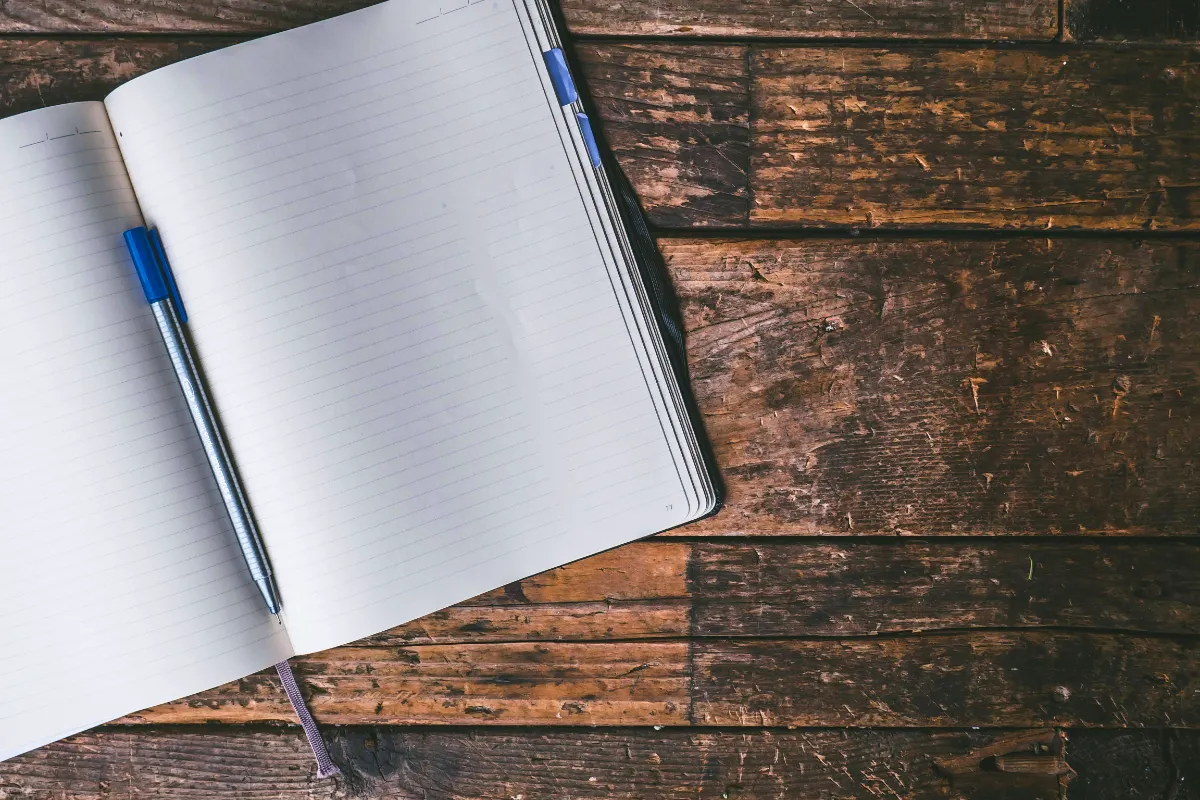The Writer’s Playbook: Unlocking Your Creative Potential
This structured guide offers a collection of powerful writing drills and techniques designed to reignite your creative spark. While writing faster is essential for productivity, these exercises focus on depth and creativity. Whether you’re facing writer’s block, seeking to develop a more authentic voice, or simply looking to expand your creative range, these exercises provide practical pathways to more vibrant, compelling writing. Return to these pages whenever your writing feels stale or your creative well runs dry.

Drill 1: Sensory Immersion
Purpose: Strengthen your descriptive powers and sensory awareness The Practice:
- Choose a location (coffee shop, park, bedroom)
- Set a timer for 5 minutes per sense
- Focus exclusively on one sense at a time: What do you hear? Smell? Feel? See? Taste?
- Write without stopping, noting every detail that sense reveals
- Later, weave these separate threads into a complete tapestry
Pro Tip: Carry a small notebook specifically for sensory observations throughout your day. These become your creative raw materials.
Drill 2: The Object Biography
Purpose: Develop narrative imagination and build empathy with the inanimate The Practice:
- Select an ordinary object in your room (a coffee mug, chair, pen)
- Create a timeline: birth (manufacturing), childhood (store shelf), adolescence (new purchase), etc.
- Write from the object’s perspective
- Include moments of crisis, joy, and transformation
- Conclude with the object’s hopes for the future
Pro Tip: This exercise trains you to find stories everywhere. The more mundane the object, the more creative you must become.
Drill 3: The Character Interview
Purpose: Develop dimensional characters who exist beyond your plot needs The Practice:
- Create a basic character sketch (name, age, occupation)
- Sit across from an empty chair and imagine them there
- Ask them questions aloud, then write their answers
- Probe their fears, desires, secrets, and contradictions
- Let them surprise you with unexpected responses
Pro Tip: The best characters will resist your attempts to define them. Listen when they push back.
Drill 4: Constraint Writing
Purpose: Break habitual writing patterns and force innovative solutions The Practice:
- Give yourself artificial limitations such as:
- Write without using the letter ‘e’
- Create a story using only one-syllable words
- Write a scene where no character speaks more than five words at a time
- Compose a narrative where each sentence is exactly 12 words
Pro Tip: What feels like handcuffs initially becomes a catalyst for unexpected brilliance.
Drill 5: Word Association Alchemy
Purpose: Generate unexpected connections and overcome predictable writing The Practice:
- Begin with a starter word (“blue”)
- Free-associate to the next (“ocean”)
- Continue for 10-15 words (“deep,” “mysterious,” “unknown,” etc.)
- Now craft a story that incorporates all words in sequence
- Don’t force connections; let the words suggest their own narrative logic
Pro Tip: This exercise mimics how readers experience your writing—one word leading naturally to the next.
Drill 6: Genre Fusion Laboratory
Purpose: Break genre constraints and discover fresh narrative territory The Practice:
- Select two wildly different genres (Western + Sci-Fi)
- List key elements of each (cowboys, spaceships, shootouts, alien encounters)
- Create a setting that accommodates both
- Write a scene where these elements interact organically
- Pay attention to language—where Western vernacular meets technical jargon
Pro Tip: The most exciting writing often happens at the boundaries between established categories.
Drill 7: First Line Launchpad
Purpose: Practice beginning stories with energy and direction The Practice:
- Collect powerful first lines from books you admire
- Use each as the first line of your own completely different story
- Write for 15 minutes without stopping
- After finishing several, compare how the same prompt led to different destinations
- Eventually create a collection of your own compelling first lines
Pro Tip: A strong first line contains the DNA of the entire story.

The Handwritten Revival
Purpose: Reconnect with the physical act of writing to access different creative pathways The Practice:
- Dedicate a special notebook for handwritten drafts
- Create a ritual around it (special pen, location, time of day)
- Begin each session with 5 minutes of mindful breathing
- Allow yourself to write messily, cross things out, draw arrows
- Embrace the inability to instantly delete
- Type up only after the handwritten draft feels complete
Pro Tip: The friction of handwriting forces thoughtful word choice and slows you down enough to hear your authentic voice.
Blogger? Reclaiming Your Blogging Soul
Purpose: Balance audience metrics with creative integrity The Practice:
- Create a content calendar with three categories:
- Strategic Posts (SEO-optimized, keyword-focused)
- Heart Posts (things you deeply care about regardless of metrics)
- Experimental Posts (creative risks, new formats, voice explorations)
- Maintain a ratio that sustains both your platform and your spirit
- Write your Heart Posts first thing in the morning before checking analytics
- Develop a “metrics fast” where you don’t check performance for a set period
Pro Tip: The posts you’re most afraid to publish often become the ones that connect most deeply with readers.
Daily Training Regimen
Purpose: Build consistent creative muscle The Practice:
- Morning Pages: 3 pages of stream-of-consciousness writing upon waking
- Lunchtime Observations: 10 minutes documenting the world around you
- Evening Reflection: 15 minutes exploring a moment from your day
- Weekly Integration: Review your daily writings for patterns, insights, and material
Combine these creative exercises with proven productivity strategies and broader life power moves for complete professional development.
Pro Tip: Just as athletes train daily regardless of inspiration, writers must practice consistently to be ready when inspiration strikes.
The Reading-Writing Connection
Purpose: Absorb techniques from masters while developing your own voice The Practice:
- Read actively with a pencil in hand
- Transcribe passages you love word-for-word to feel their rhythm
- Analyze what makes effective writing work (sentence structure, pacing, imagery)
- Write “in conversation” with what you’re reading—not copying, but responding
- Maintain a commonplace book of passages that move you
Pro Tip: Great writers are great readers first. The books you love are your most important teachers.
Remember, these drills aren’t just exercises—they’re fundamental training for the writing mind. Incorporate them regularly, and watch as your creative landscape expands before your eyes.
